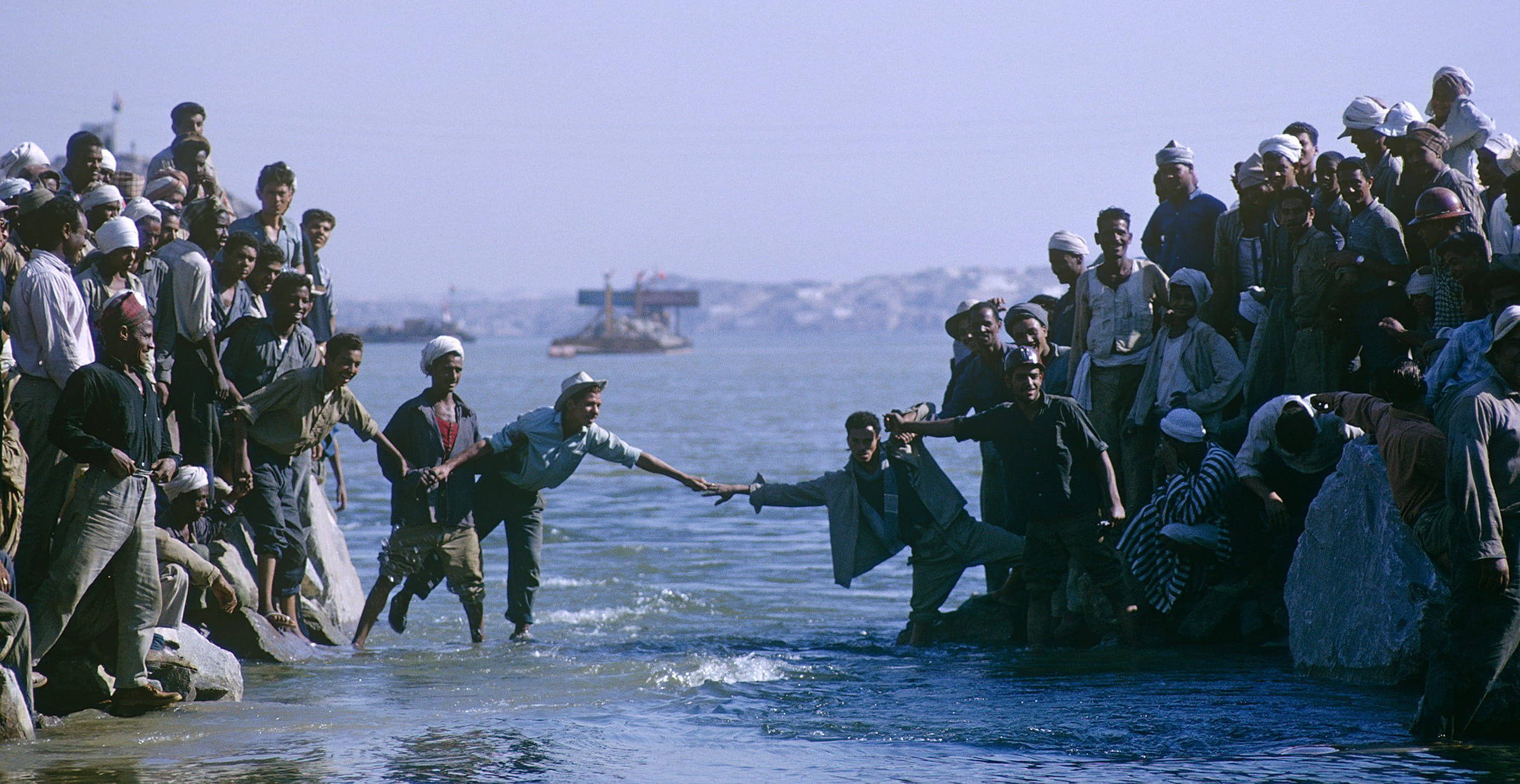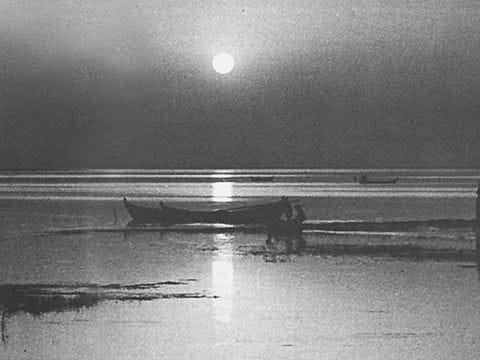
FirstLook: Aswan, Egypt, May 14, 1964
In 1966, a Norwegian-born, Mexico-educated, Beirut-resident photographer and journalist named Tor Eigeland took his first assignment for this magazine. Since then, his byline has appeared more than 50 times on some of our most popular stories from around the globe. This is his story of one of his earliest assignments in the Middle East.
"Two years before my first assignment for Aramco World, I was standing in the middle of the Nile with two presidents looking on, and I nearly died making this shot. Gamal Abdel Nasser of Egypt and Nikita Khrushchev of the Soviet Union were inaugurating the first stage of the Soviet-financed Aswan High Dam.
"After the signing ceremony, the heads of state boarded an old ship. From the top deck,they and their retinues watched as bulldozers pushed the last piles of rocks into the river. When it was nearly done, workmen gathered to shake hands across the gap, and I had to get close for a good shot.
"A large floating hose that carried sand pumped from the desert to the base of the new dam reached out into the river. I had seen workmen walk on it. I could feel it throbbing as I made my way out to where it was anchored. The boat with the presidents floated behind me. Feeling triumphant, I made this image, and a moment later, the hose jerked loose. I dropped flat with nothing to hold onto and fought to stay on as it began swinging like a garden hose. How long this lasted I don’t remember. When the power was switched off, the hose came to rest, and I made haste for shore. To this day I wonder if it was President Nasser who shouted the order to turn off the pump.
"Half a century of unimaginably rich experiences in the Arab and Islamic-related worlds followed. There was so much to learn, and along the way, I have always tried to pass on my impressions, usually in photos and sometimes in words, to bring alive, positively, some of the people and places I came to love."
—Tor Eigeland
You may also be interested in...

Find Ramadan Lanterns on Cairo's Streets with John Feeney
Arts
In the March/April 1992 issue, writer and photographer John Feeney took AramcoWorld readers on a walk through the streets of Cairo during Ramadan.
AramcoWorld: 75 Years of Visual Storytelling Through Photography
Arts
History
Part 2 of our series celebrating AramcoWorld’s 75th anniversary this year highlights “visual vagabonding”—the magazine’s expanded use of vibrant images over the decades to fulfill the mission of cultural connection.
Discovering Life and Architecture in Iraqi Marshes
History
Arts
Amidst "the stillness of a world that never knew an engine... he found at last a life he longed to know and share.